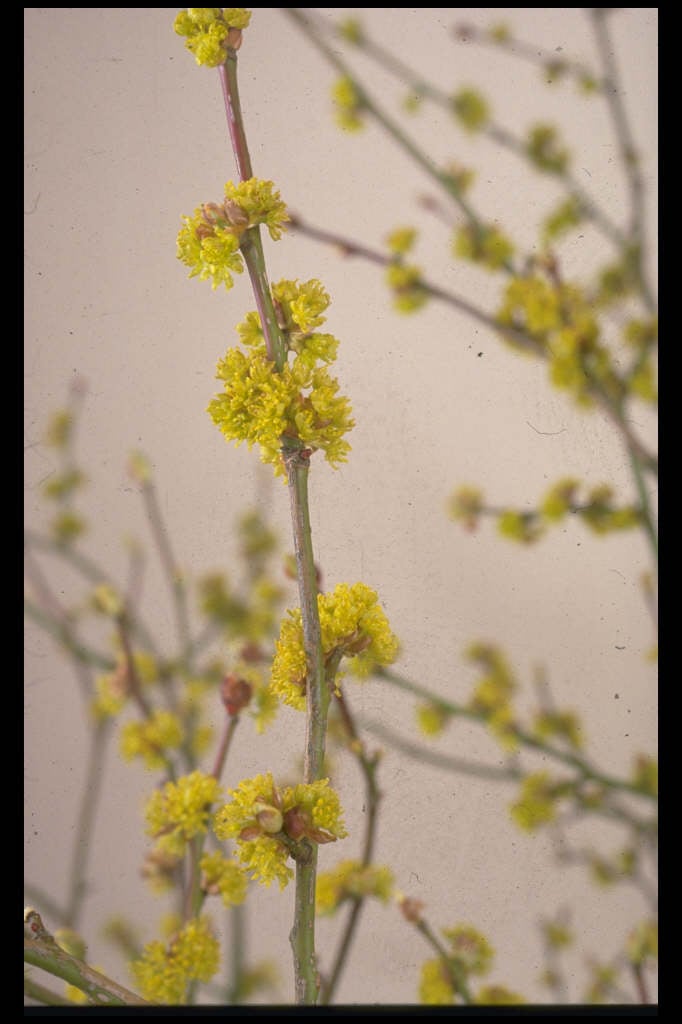Lindera obtusiloba
blunt-lobed spice bush
A large deciduous, dioecious shrub to 6m, with broad leaves mostly three-lobed at the tip, turning bright butter-yellow in the autumn. Small mustard-yellow flowers in clusters on bare branches followed by spherical glossy, red-brown berries on female plants

Buy this plant
Size
Ultimate height
4–8 metresTime to ultimate height
20–50 yearsUltimate spread
4–8 metresGrowing conditions
Moisture
Moist but well–drainedpH
AcidColour & scent
| Stem | Flower | Foliage | Fruit | |
| Spring | Yellow | Green | ||
|---|---|---|---|---|
| Summer | Green | |||
| Autumn | Yellow | Brown Red | ||
| Winter |
Position
- Partial shade
Aspect
West–facing or South–facing or East–facing
Exposure
Sheltered Hardiness
H5Botanical details
- Family
- Lauraceae
- Native to GB / Ireland
- No
- Foliage
- Deciduous
- Habit
- Bushy
- Genus
Lindera can be deciduous or evergreen trees or shrubs with aromatic leaves and small star-shaped dioecious flowers in axillary umbels in spring followed, on pollinated female plants, by glossy berries
- Name status
Correct
- Plant range
- Japan, China, Korea
How to grow
Cultivation
Grows well in most fertile, acidic soils in a woodland scenario. Male and female plants need to be grown in order for the female to bear fruit
Propagation
Propagate by seed sown in containers in a cold frame in autumn or take softwood cuttings in early summer
Suggested planting locations and garden types
- Cottage and informal garden
- Flower borders and beds
- Wall side borders
Pruning
Pests
Generally pest-free
Diseases
Generally disease-free
Love gardening
Sign up to receive regular gardening tips, inspiration, offers and more
View our Privacy Policy
Get involved
The Royal Horticultural Society is the UK’s leading gardening charity. We aim to enrich everyone’s life through plants, and make the UK a greener and more beautiful place.